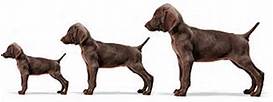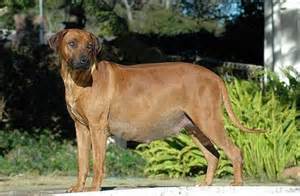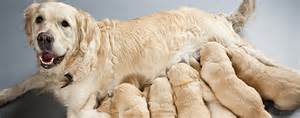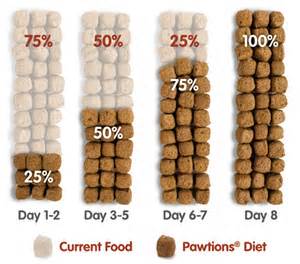How To Feed Dogs During Their Life Stages

Feeding dogs during their different life stages will be helpful for all owners of dogs so that they become familiar with the life stages their pets go through. It will guide you on how to feed and care for them as they get older. As your pet goes through these life stages, the breed of dog you have will also play an important role and how much exercise they get everyday will determine how much they need to eat.
This article will cover the following topics:
- Feeding adult dogs
- Feeding during pregnancy
- Feeding during lactation
- How to feed nursing puppies
- Introducing solid food to puppies
- Feeding older dogs
- Refusing to eat
- Transitioning to a new food
Feeding Adult Dogs
When your dog reaches maturity, they enter the maintenance stage. Dogs in this stage that are not pregnant, nursing or hardworking have low nutritional requirements for maintaining a proper body condition. A good body condition for a dog is:
- One in which the animal is well proportioned
- Easily observable waist behind the rib cage
- Ribs can be felt with a slight fat covering over them
Dogs that are fed a complete and well-balanced diet do not need any supplemental vitamins or minerals. If supplemental meat, or treats are used, they should account for no more than 10% of the total diet. Exceeding this percentage can be a cause for your dog to be lacking in some nutrition, become obese and be a finicky eater.
If you should have a dog in this stage that has lower caloric requirements, and is less active, play close attention for the potential of weight gain. Overweight and obese dogs may encounter health problems and a shorter life expectancy. To control your dog’s weight, do not feed table scraps and avoid high-energy dog food. Try to exercise him more to reduce his excess weight. If this fails, you will need to reduce his caloric intake until the desired weight is reached.
The feeding requirements for adult dogs will vary depending upon the breed, activity, metabolism and owner’s preference. If your dog is fed once or twice a day, be sure to fed him at the same time, and have lots of fresh drinking water available at all times.
Back To Top
Feeding During Pregnancy

During this stage, a little more care should be taken. Regardless of your dog’s breed, the female should be at least one year old and in the second heat period before she should breed. Males that are overweight they may be physiologically and anatomically inefficient for mating. Overweight females, may experience lower conception rates and more problems at whelping. Each dog should be fed as an individual to achieve and maintain their proper body condition and weight.
During the last two to three weeks, feeding requirements for pregnant females will increase, and caloric needs can be met during this last trimester by gradually increasing her food intake. Her diet should consist of 1600 metabolizable calories or more per pound of food and at least 21% protein is recommended. Look for food that is labeled complete and balanced for reproduction and growth for all life stages.
Unless the female has a tendency to put on too much weight during pregnancy, she can be fed all the food she wants. Sometimes a pregnant female will temporarily reduce her intake of food about three to four weeks into the pregnancy. She will eat more during the latter phase of pregnancy. However, if this does not occur and body condition begins to deteriorate, steps should be taken to increase food intake.
You can accomplish this by moistening the dry food with warm water to improve palatability, or adding small amounts of canned dog food to the dry food and feeding her several times each day. She may loose her appetite as whelping nears. This is normal. Unless she appears to be having a health problem, no change in the feeding program is necessary.
In most cases, food refused during the ninth week is a sign that whelping will occur within the next 24 to 48 hours. Her appetite should return within 24 hours after whelping. After the puppies are born, you should feed her all the food she wants. Be sure that fresh water in a clean bowl is available at all times. During reproduction, the water serves as a carrier of nutrients to the developing fetus and removes wastes for elimination.
Back To Top
Feeding During Lactation
In this stage, the demand for milk by nursing puppies will continue to increase for about 20 to 30 days or up to 4 weeks. The female’s food and water requirements will be increasing during this time. At peak lactation, the female’s food intake may be two to four times above her normal food intake. Nursing females should be offered all the food they want during this stage.
Moistening dry dog food with water will help increase food intake during the lactation stage. Another reason for offering moistened food is at three to four weeks of age, puppies will start nibbling on solid food. As puppies begin to eat solid food, the demand on the female for milk production will decrease. Puppies are normally weaned between six and eight weeks of age, and by weaning time, the female’s food consumption should be less than 50% above her usual or maintenance level.
To help reduce the milk flow and prevent mammary gland problems, the following weaning procedure is recommended:
- On the day the puppies are weaned, usually six to eight weeks after birth, the female should not receive any food, but should have plenty of fresh water to drink.
- Separate the puppies from the mother and offer them food and water. Dry food moistened with warm water may help stimulate the puppies’ food intake.
- The day after weaning, the mother should receive ¼ amount of food she was fed prior to being bred. The mother and pups can be grouped together for several hours on the day after weaning so the pups can nurse the mother dry.
- On the third day, the female should receive ½ amount fed prior to breeding.
- On the fourth day, the female should receive ¾ of the amount of food prior to breeding.
- On the fifth day, she should be offered her normal maintenance level of food.
If the litter is large, the female may be quite thin when the puppies are weaned. If this should be the case, give her extra food after the fifth day of weaning and until her body condition returns back to normal.
Back To Top
Feeding Nursing Puppies

During this stage, a rule of thumb, each puppy in a litter should gain approximately its birth weight each week during the lactation or nursing period.
While most females are excellent mothers, some nervous or inattentive females may require special attention to help them calm down and accept their new offspring. This may involve working with the mother and/or puppies, and placing pups near nipples at feeding time.
Poorly nursed puppies may be smaller in size, cooler in body temperature and weigh less. Routinely handling the pups will allow for an opportunity to check their condition and progress, although excessive handling may be stressful for the mother and pups and should be avoided.
Back To Top
Introducing Puppies to Solid Foods
By six weeks of age, most puppies are ready to be weaned. If they have started to eat solid foods from the mother’s dish, it is not unusual for puppies to begin to wean themselves at about four to five weeks of age.
Young puppies should be fed an appropriate puppy life stage food at least three times a day until their food requirements, per pound of body weight, begin to level off as they mature. Feeding schedules can be reduced to twice a day when pups are four to five months old, and once a day when they are eight months or older. Fresh water in a clean bowl should be available at all times.
Back To Top
Feeding Senior Dogs
Dogs in this stage are defined as older or geriatric when they have reached the last 25 percent of their expected life span:
- Small breed dogs greater than 12 years of age
- Medium breed dogs greater than 10 years of age
- Large breed dogs greater than 9 years of age
- Giant breed dogs greater than 7 years of age
Some signs of aging are described as:
- changes in body weight
- difficulty in locomotion (movement)
- changes in hearing and/or eyesight
- changes in skin and/or hair coat
- changes in urine or bowel habits
- bad breath associated with teeth or mouth problems
Current commercial diets formulated for adult dogs at maintenance generally provide adequate protein. Less active animals may have reduced energy requirements, and caution should be used when feeding energy dense diets to avoid the risk of excessive weight gain.
Back To Top
Refusing To Eat

In this stage, a dog refuses to eat may be a sign of an illness and contacting your veterinarian is in order. If your dog is normally not picky about its food and you have avoided the problem eater habits this is a sign that something is wrong.
Offering your pet a variety of pet foods encourages him to become a “holdout” to see what it will be offered next. Some dogs are eager to eat a particular pet food for several days. Suddenly this eagerness vanishes and they eat reluctantly or refuse to eat for a few days. This refusal can be the dog’s own attempt to control calorie intake.
Overeating can cause a dog, like a human, to experience an uncomfortable feeling. The dog will attempt to relieve his discomfort by not eating or eating very little of his food.
Back To Top
Transitioning To a New Dog Food
If for health or other reasons you must change your dog’s diet, do it gradually over a two week period. Add a small amount of the new diet to the food currently being fed. Each day increase the quantity of the new diet and decrease the amount of the old. This gradual diet change helps avoid digestive upsets.
Here is the new food transitioning schedule:
- Days 1-4: Mix 75% of the old food with 25% of the new.
- Days 5-8: Mix 50% of the old with 50% of the new.
- Days 9-12: Mix 25% of the old with 75% of the new.
- Day 13: 100% of the new dog food.
Note: If you should observe your dog developing diarrhea, then slow down the transition process to the new food.
These tips should be helpful so you know the different dog life stages and what his feeding requirements are. As always, if you should observe anything out of the ordinary, consult your veterinarian.
Final Feeding Tip
There is one final feeding tip, never, and I mean never, feed your puppy, adult, or senior dog table scrapes. To avoid being tempted by your dog, try to feed your dog at the same time your family eats. This should help in reducing your pet begging for table scrapes. Also, table scrapes do not provide your dog with the proper nutrition he needs. Dog food is specially prepared for your dogs nutritional requirements. Feeding table scrapes along with his daily food allotment and treats will have an effect on him gaining weight, that leads to obesity, which is what you want to avoid.
Table scrapes, no matter how much you think they might be nutritious, in the long haul, they are not. You will do yourself a favor in just not starting to give your pet table scrapes from the start. This is also true for all other members of your family. If your dog should beg, give him one of his favorite treats instead.
As an Amazon associate, I earn from qualified purchases.
Back To Top
Go back to Dog.Dog Luxury Beds home page.





